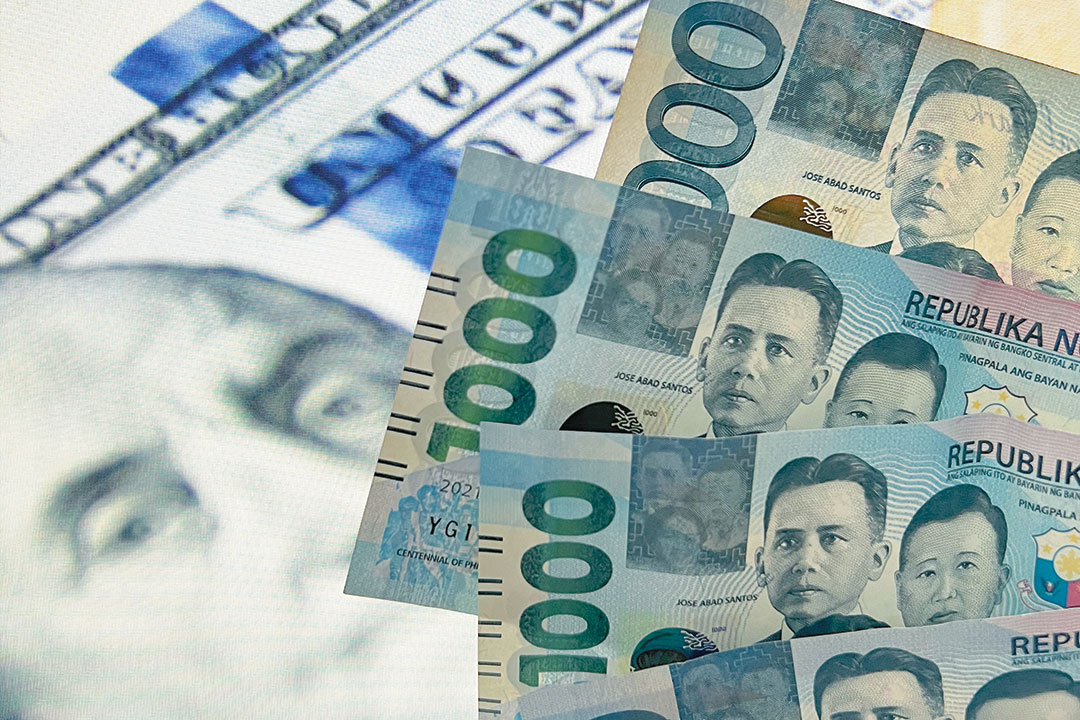Cooling inflation, BSP easing bets may boost peso

THE PESO could strengthen further against the dollar this week amid low inflation and expectations of further rate cuts by the central bank.
On Thursday, the local unit closed at P55.62 per dollar, climbing by 15.1 centavos from its P55.771 finish on Wednesday, Bankers Association of the Philippines data showed.
Week on week, the peso likewise rose by 12.5 centavos from its P55.745-a-dollar finish on May 30.
Philippine financial markets were closed on Friday (June 6) for the Eid al-Adha holiday.
“The US dollar-peso exchange rate corrected slightly lower after the latest benign inflation data,” Michael L. Ricafort, chief economist at Rizal Commercial Banking Corp., said in a Viber message.
Philippine headline inflation eased to 1.3% in May from 1.4% in April and 3.9% in the same month a year ago, the government reported on Thursday.
The May print was the lowest inflation rate in five-and-a-half years or since the 1.2% posted in November 2019.
This also marked the fourth straight month of deceleration and tenth straight month of inflation settling within the 2-4% target band.
For the first five months, inflation averaged 1.9%, a tad below the low end of the Bangko Sentral ng Pilipinas’ (BSP) annual target.
The peso also rose last week amid broad dollar weakness, even amid the greenback’s slight recovery, Mr. Ricafort added.
The dollar rose against major currencies on Friday after data showed better-than-expected US jobs growth in May despite a slowdown from the previous month, suggesting the Federal Reserve might wait longer to cut interest rates, Reuters reported.
Labor department data showed that employers added 139,000 jobs in May, fewer than the 147,000 jobs added in April, but exceeding the 130,000 gain forecast in a Reuters poll of economists.
The dollar was up 0.95% to 144.87 against the Japanese yen and added 0.26% to 0.822 against the Swiss franc. The greenback extended gains against both safe-haven currencies following the data.
The US currency was headed for a second straight weekly gain against both the yen and franc, but it was still down about 8% year to date and about 9% year to date, respectively, against both currencies.
The dollar has been weighed down by uncertainty from President Donald J. Trump’s tariff policies and the prospects of negotiations with trading partners including China, the deficit spending and tax bill being considered in the US Senate after it passed the House of Representatives, and the trajectory of recent economic data.
The dollar index, which measures the greenback against a basket of currencies including the yen and the euro, rose 0.53% to 99.20 on the session, but it is on track to notch a weekly loss.
Mr. Trump and Chinese leader Xi Jinping held a rare leader-to-leader call on Thursday, as tensions over tit-for-tat tariffs appear to be easing. The dollar strengthened 0.23% to 7.191 versus the offshore Chinese yuan.
For this week, the peso may continue its recovery against the greenback as the benign inflation environment would open the door to further BSP rate cuts, Mr. Ricafort said.
BSP Governor Eli M. Remolona, Jr. has signaled the possibility of two more 25-basis-point (bp) rate cuts this year. He also said a cut is on the table at the Monetary Board’s June 19 meeting.
The central bank has so far slashed borrowing costs by 100 bps since it began easing in August.
The peso will be supported by the seasonal increase in overseas Filipino worker remittances due to the summer holidays this month as well as school-related expenses, Mr. Ricafort added.
“Locally, the peso could find some support from strong gross international reserves (GIR) and the low inflation print for May, which boosts market confidence,” John Paolo R. Rivera, a senior research fellow at the Philippine Institute for Development Studies said.
Latest central bank data showed the country’s dollar reserves rose by 4.6% year on year to a three-month high of $106.65 billion as of end-February.
Mr. Rivera said the peso’s movement will “likely be influenced by external factors, such as market reactions to the latest US economic data on inflation and jobs, and any forward guidance from the Fed ahead of its next policy meeting.”
Federal Reserve policymakers have already signaled they are in no rush to cut interest rates, and a government report on Friday showing the labor market is far from crumbling amid big trade policy changes only cements that stance, Reuters reported.
Financial markets have been betting the Fed will wait until September to cut rates and will deliver a second reduction in borrowing costs by December. After the jobs report, they trimmed their bets on a possible third rate cut by the end of this year.
“However, continued geopolitical risks and uncertainties in global trade including tariff developments could still weigh on investor sentiment and trigger some volatility,” Mr. Rivera added.
Mr. Ricafort expects the peso to trade from P55.40 to P55.90 this week, while Mr. Rivera said it could move at the low P55 range. — Luisa Maria Jacinta C. Jocson with Reuters



